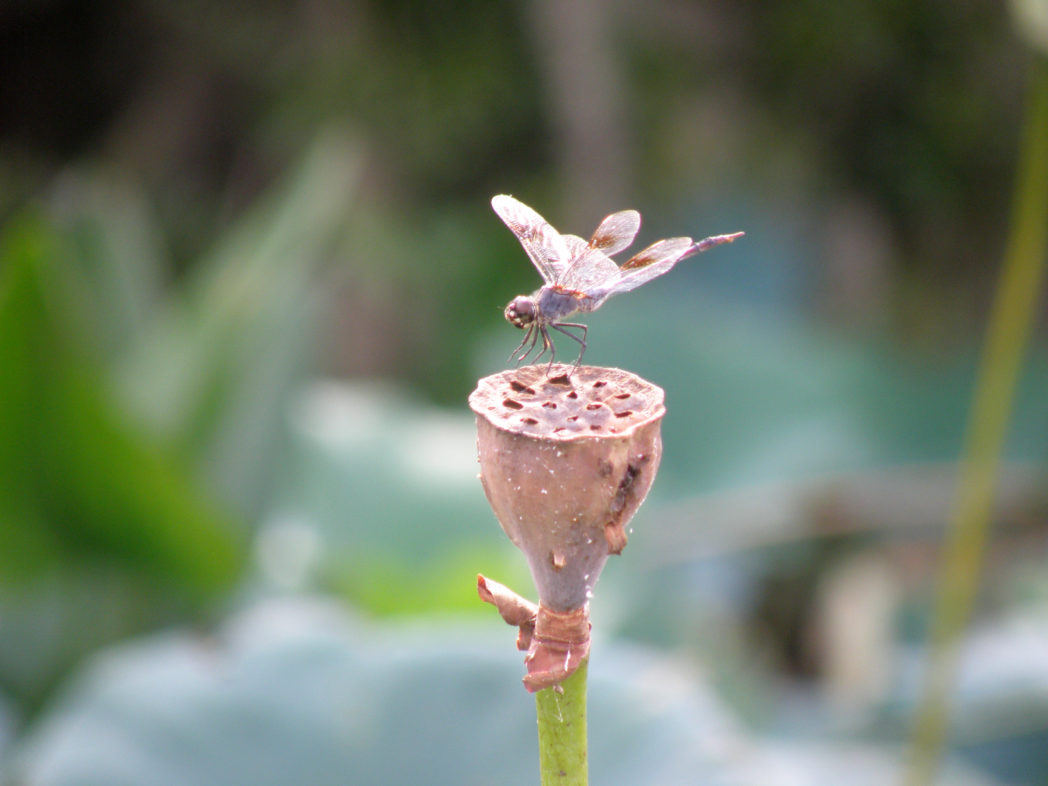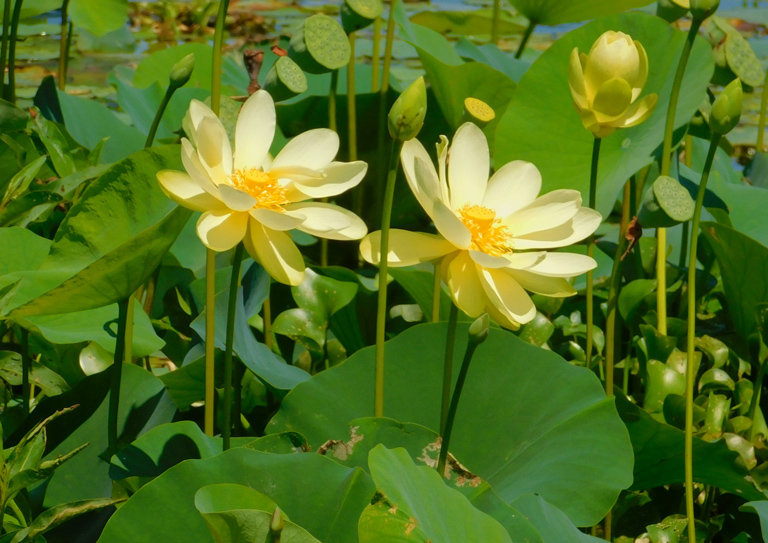American lotus
Pictured above: American lotus (Nelumbo lutea) by Gregory Alexander McKenzie (CC BY-NC). Click on terms for botanical definitions. View post as a PDF.
American lotus (Nelumbo lutea) is an aquatic emergent perennial with large, solitary flowers that are pale yellow in color and are very fragrant. It has one of the largest blooms of any flowering plant in America. Its leaves are large and round with undulating margins, and are often elevated out of the water. The lotus’ unique seed pod emerges as an inverted cone-like structure from the center of the bloom. As the pod develops, it turns from pale yellow to dark brown and resembles a shower head. The seeds are eaten by water fowl. Young seeds, as well as roots, shoots and blossoms are edible to humans.
American lotus occurs naturally in still to slow moving freshwater habitats such as along lake and pond edges, and in freshwater marshes.
Plants in the Nelumbo genus (of which there are only two worldwide) were once considered members of the Nymphaeaceae (waterlily) family in the order Nymphaeales, but molecular studies recently concluded that Nelumbo species actually belong in the Proteales order, along with such plants as the American sycamore tree (Platanus occidentalis).

Family: Nelumbonaceae (Lotus family)
Native range: Peninsula, central and eastern Panhandle
To see where natural populations of American lotus have been vouchered, visit florida.plantatlas.usf.edu.
Hardiness: 8A–11
Soil: Wet (submerged), acidic soil
Exposure: Full sun
Growth habit: 2-5’
Propagation: Seed, division
Garden tips: American lotus is a fast-growing plant that adds beauty and color to a pond, lake or wetland. It also provides food and shelter for wildlife.
American lotus seeds are available through the Florida Wildflowers Growers Cooperative.

